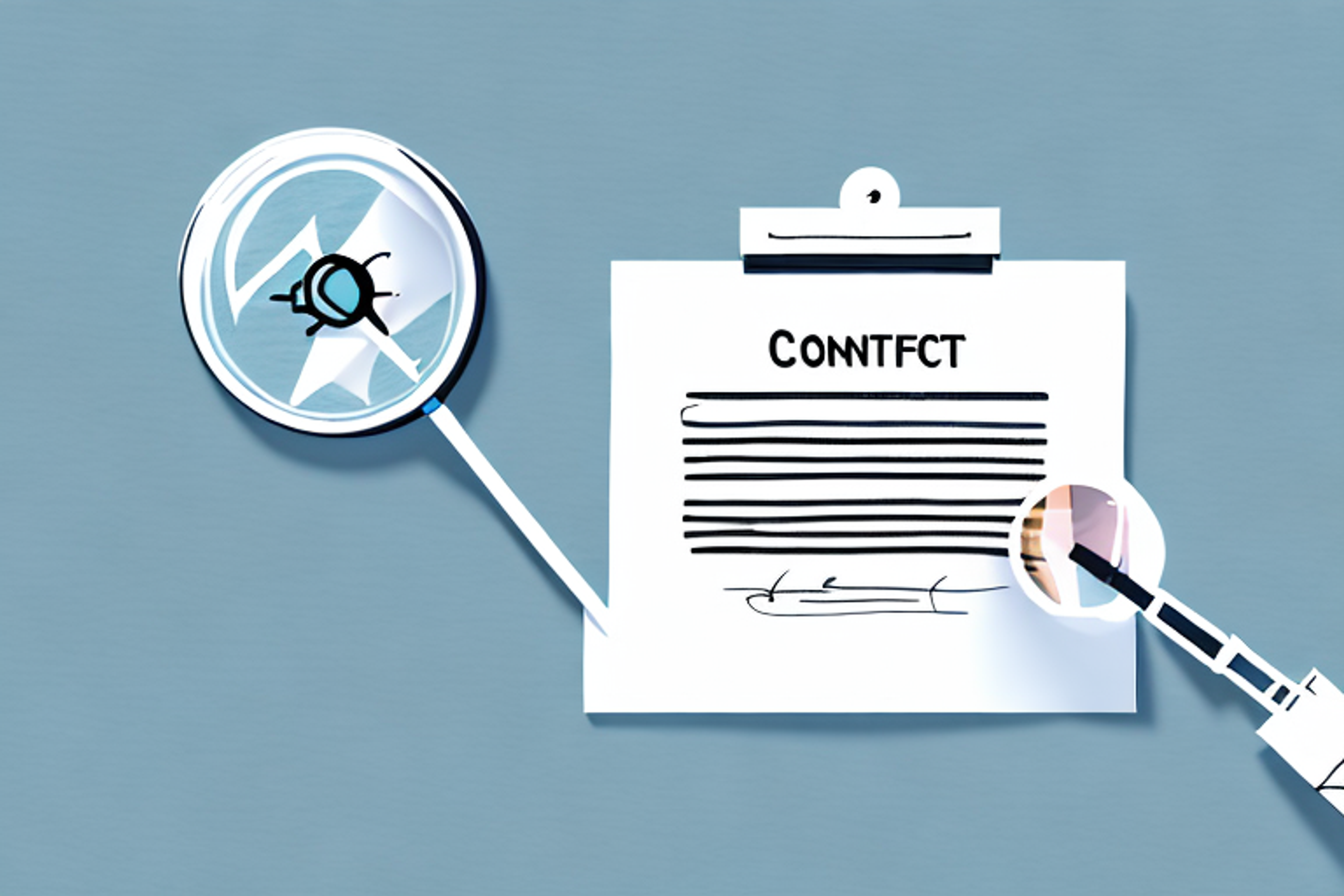The Road to Success in Torts: A Comprehensive Guide
Looking to excel in Torts? Look no further! Our comprehensive guide provides you with all the tools and knowledge you need to succeed.
Posted March 6, 2025

Table of Contents
If you are considering filing a tort claim or defending yourself against one, it is essential to understand the basics of tort law. In this comprehensive guide, we will walk you through the various types of torts, elements of a tort claim, how to prove negligence and strict liability, tips for finding the right lawyer, gathering evidence, navigating the legal process, and much more.
Understanding the Basics of Torts
At its core, a tort is a civil wrong that causes harm or injury to another person. Tort claims can be filed for a wide range of actions, including negligence, intentional harm, and strict liability. Understanding the basic principles of torts is critical to building a strong case, whether you are the plaintiff or defendant.
One important aspect of tort law is the concept of duty of care. This refers to the legal obligation that individuals and organizations have to take reasonable steps to prevent harm to others. For example, a doctor has a duty of care to their patients to provide competent medical treatment. If they fail to do so and their patient is harmed as a result, they may be liable for medical malpractice.
Another key principle of tort law is the idea of causation. In order for a tort claim to be successful, the plaintiff must be able to prove that the defendant's actions were the direct cause of their injuries or damages. This can sometimes be a complex issue, particularly in cases where there are multiple factors that contributed to the harm suffered by the plaintiff.
Different Types of Torts Explained
There are several different types of torts, including intentional, negligent, and strict liability. Understanding the nuances between each type of tort is vital in building a winning case. For example, intentional torts involve actions that are purposely harmful, such as assault or battery. Negligent torts, on the other hand, involve actions that are careless or unintentional, such as medical malpractice or car accidents. Strict liability torts are non-intentional but still impose liability, such as products liability where the product is defective.
It is important to note that some torts can fall under multiple categories. For instance, a car accident can be both a negligent tort if the driver was careless, and an intentional tort if the driver purposely hit another car. Additionally, some torts may require different levels of proof. For example, intentional torts often require proof of intent, while negligent torts require proof of a breach of duty. Understanding these complexities is crucial in building a strong case and achieving a favorable outcome.
Elements of a Tort Claim: What You Need to Know
A successful tort claim must establish four elements: duty, breach, causation, and damages. Duty refers to the obligation to act in a certain way to avoid harm, while breach refers to failing to fulfill that duty. Causation links the breach of duty to the harm caused, and damages refer to the actual harm or injury suffered by the plaintiff. Understanding and establishing these elements are critical in building a winning case.
It is important to note that there are different types of tort claims, including intentional torts and negligence. Intentional torts involve deliberate actions that cause harm, such as assault or defamation. Negligence, on the other hand, involves a failure to exercise reasonable care, such as a doctor failing to diagnose a patient's illness. Understanding the type of tort claim being pursued is also crucial in building a successful case.
How to Prove Negligence in a Tort Claim
Proving negligence in a tort claim can be complex, and requires showing that the defendant failed to exercise reasonable care, leading to the plaintiff's injury. This often involves establishing the standard of care required, proving that the defendant breached that standard of care, and showing that the breach caused the plaintiff's injuries. Expert testimony, witness testimony, and physical evidence are all critical components in proving negligence in a tort case.
In addition to these components, it is important to note that the plaintiff must also prove that they suffered damages as a result of the defendant's negligence. Damages can include physical injuries, emotional distress, and financial losses. It is important to gather evidence of these damages, such as medical bills and testimony from medical professionals, to support the claim for compensation.
Strict Liability: When It Applies and How to Prove It
Strict liability torts do not require proof of intent or negligence but impose liability regardless. Such liability arises when the product produces a defect that causes harm to the consumers. Establishing liability involves showing the plaintiff was using the product as intended and a defect existed in the product.
Strict liability can also apply in cases of abnormally dangerous activities, such as blasting or storing explosives. In these cases, the defendant is held strictly liable for any harm caused by the activity, regardless of whether they were negligent or not.
It is important to note that strict liability does not apply to all products or activities. Courts will consider factors such as the nature of the product or activity, the likelihood and severity of harm, and the feasibility of alternative designs or methods of performing the activity when determining whether strict liability should apply.
Intentional Torts: What They Are and How to Win Them
Intentional torts involve deliberate actions that cause harm, such as assault or battery. To win an intentional tort case, you must prove that the defendant intended to cause harm, and that harm resulted from their actions. This often involves establishing the intent or motive behind the actions, and proving that the harm caused was a direct result of those actions.
Tips for Finding the Right Torts Lawyer for Your Case
Finding the right torts lawyer is essential to building a winning case. Look for a lawyer with experience in tort law, a track record of successful cases, and a willingness to fight for your rights. Conduct interviews, check references, and discuss payment arrangements upfront to ensure you find the best lawyer for your needs.
The Importance of Gathering Evidence in a Tort Claim
Gathering evidence is a critical component of building a winning tort case. This often involves collecting physical evidence, witness testimony, and expert opinions to demonstrate the defendant's liability. Working with a skilled lawyer can help ensure that all relevant evidence is collected and presented effectively in court.
Navigating the Legal Process in a Tort Case: What to Expect
The legal process in a tort case can be complex and time-consuming, requiring expert knowledge of legal procedures and rules of evidence. Working with a skilled lawyer is essential to navigate the process effectively, from filing the initial claim to presenting evidence in court and negotiating settlements with opposing parties. A good lawyer can help you understand what to expect at every step of the way and ensure that you are equipped to make informed decisions throughout the legal proceedings.
Common Defenses Used in Tort Cases and How to Overcome Them
Defendants may use a variety of defenses to avoid liability in tort cases, including assertions of contributory negligence, assumption of risk, and statutes of limitations. Overcoming these defenses often requires building a strong case that effectively disproves the defendant's argument. Working with a skilled lawyer can help you build a successful defense against these common defenses.
Maximizing Your Damages in a Successful Tort Claim
When filing a tort claim, it's vital to maximize the damages you receive for the harm or injury you suffered. This often involves collecting evidence of your damages, such as medical bills, lost wages, and emotional distress, and presenting that evidence effectively in court. A skilled lawyer can help you identify all the damages you are entitled to, and work to maximize your compensation in a successful tort claim.
Settling vs. Going to Trial: Weighing Your Options in a Tort Case
When facing a tort case, you must decide whether to settle or go to trial. Settling can be beneficial in avoiding long and costly legal proceedings, but may result in a lower payout. Going to trial can yield a higher payout, but can be more expensive and time-consuming. Weighing the pros and cons of each option with a skilled lawyer can help you make an informed decision about what is right for you.
The Role of Expert Witnesses in Torts Cases
Expert witnesses play a critical role in many tort cases, providing professional opinions and testimony to support the plaintiff's case. Expert witnesses may be used to establish the standard of care, assess damages, or provide other vital evidence. Finding the right expert witness and presenting their testimony effectively is essential in building a strong tort case.
Potential Challenges with Multi-State Torts Claims and How to Manage Them
If a tort claim involves parties in multiple states, it can be more complicated to navigate the legal process and adhere to different state laws. Working with a skilled lawyer who understands the legal nuances of each state involved can help manage these challenges effectively and ensure that all requirements are met.
Understanding Joint and Several Liability
In tort cases with multiple defendants, joint and several liability provisions can make determining liability and damages more complex. Joint liability refers to each defendant being equally liable for the damages suffered by the plaintiff. Several liability refers to each defendant being responsible for their share of the damages. Understanding these provisions and how they apply to your case is critical to building a successful tort claim.
What to Do If You Are Named As A Defendant In A Torts Claim
If you are named as a defendant in a torts claim, it is crucial to take immediate action to protect your rights and interests. This may involve hiring a skilled lawyer to represent your interests, gathering evidence and defending yourself in court, or pursuing other legal options. Working with a knowledgeable lawyer is essential in navigating the complex legal proceedings involved in a defendant in a torts case.
The Statute Of Limitations In Torts Cases - What You Need To Know
The statute of limitations in torts cases sets a time limit for filing a claim or initiating legal proceedings. Understanding the statute of limitations and how it applies to your situation is essential in building a successful case. Deadlines may vary depending on the type of tort, the state where the claim is being filed, and other factors, making it critical to work with a skilled lawyer who understands the legal nuances involved.
Ethical Considerations For Lawyers Handling Torts Cases
Lawyers handling tort cases must adhere to strict ethical standards in representing their clients. This includes avoiding conflicts of interest, following proper legal procedures and rules of evidence, and ensuring that client confidentiality is maintained at all times. Understanding these ethical considerations and working with a lawyer who prioritizes ethical behavior is critical to building a successful tort case.
With a solid understanding of the basics of tort law, the elements required to establish liability, how to gather evidence, navigate the legal process, and maximize your compensation, you can build a winning tort case. Working with a skilled tort lawyer is an essential component in getting the justice you deserve.











